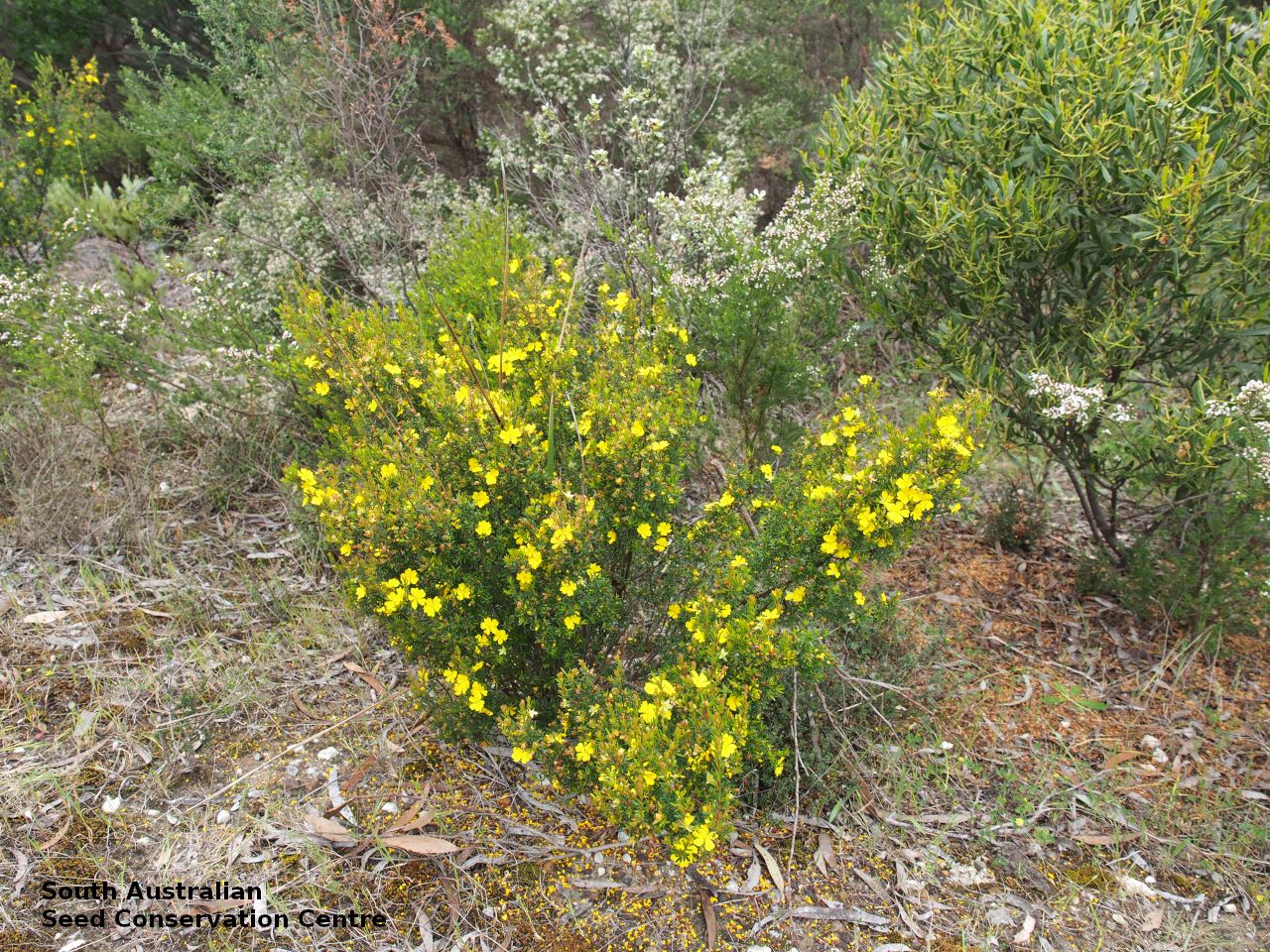
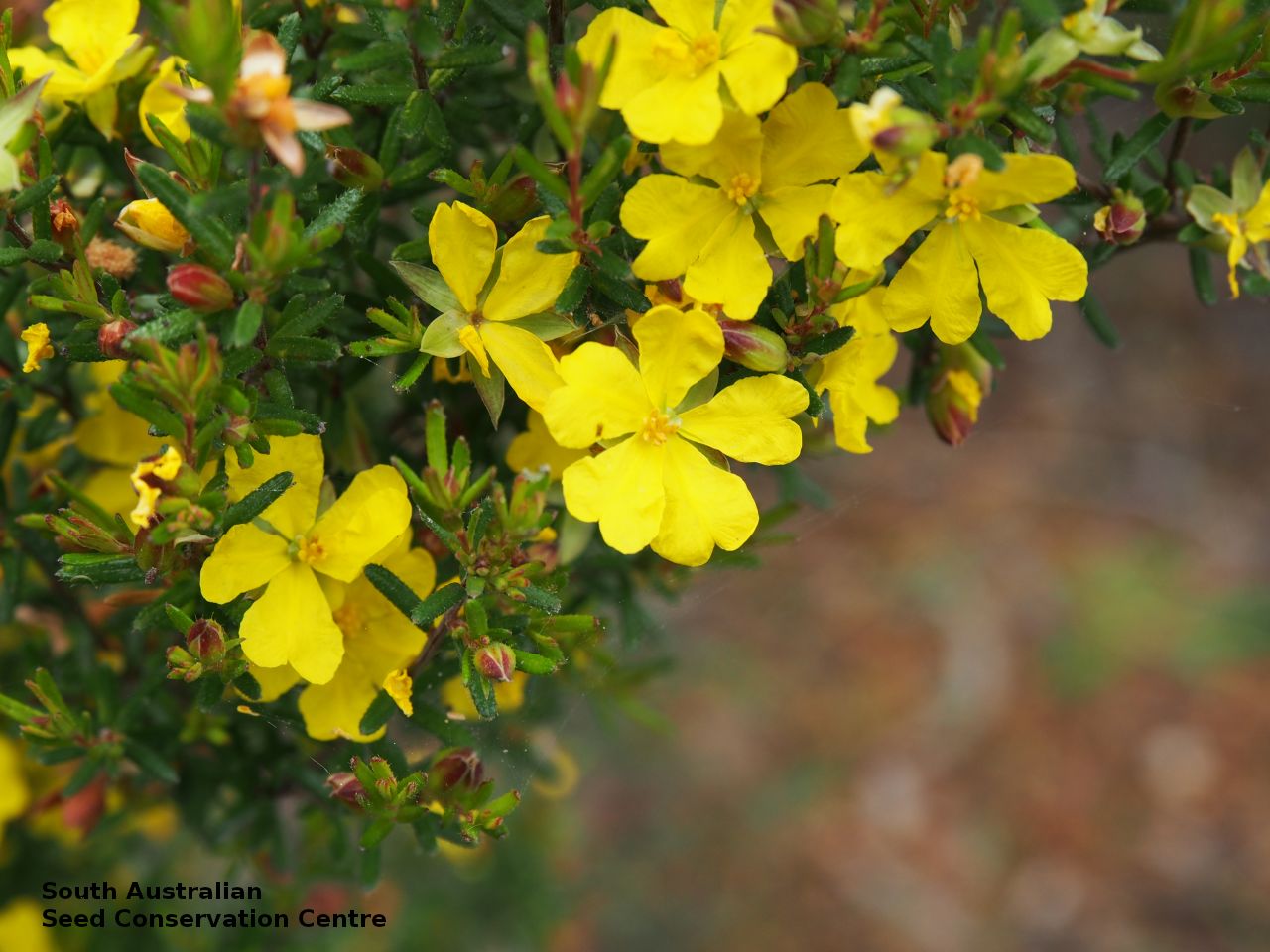
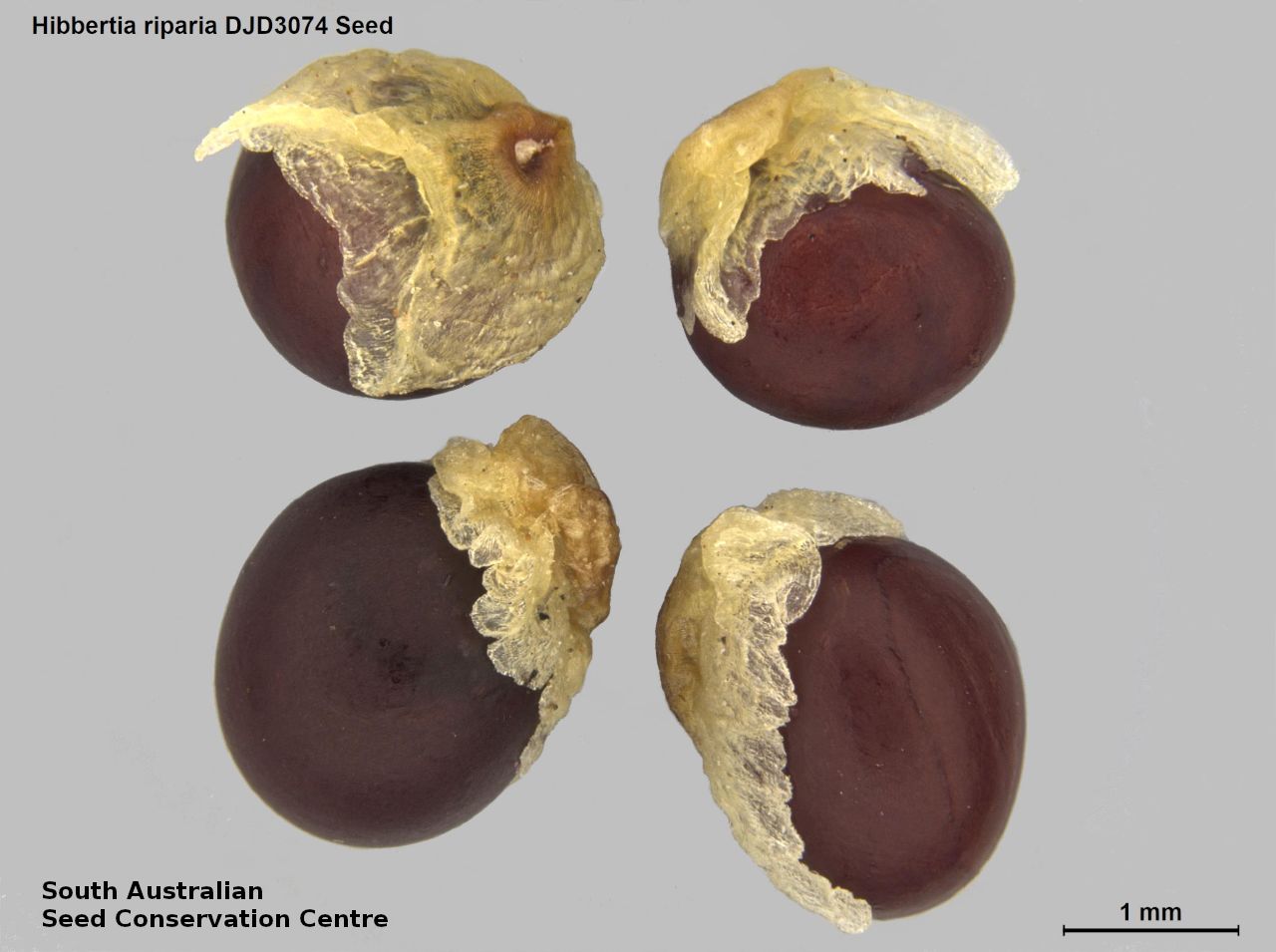
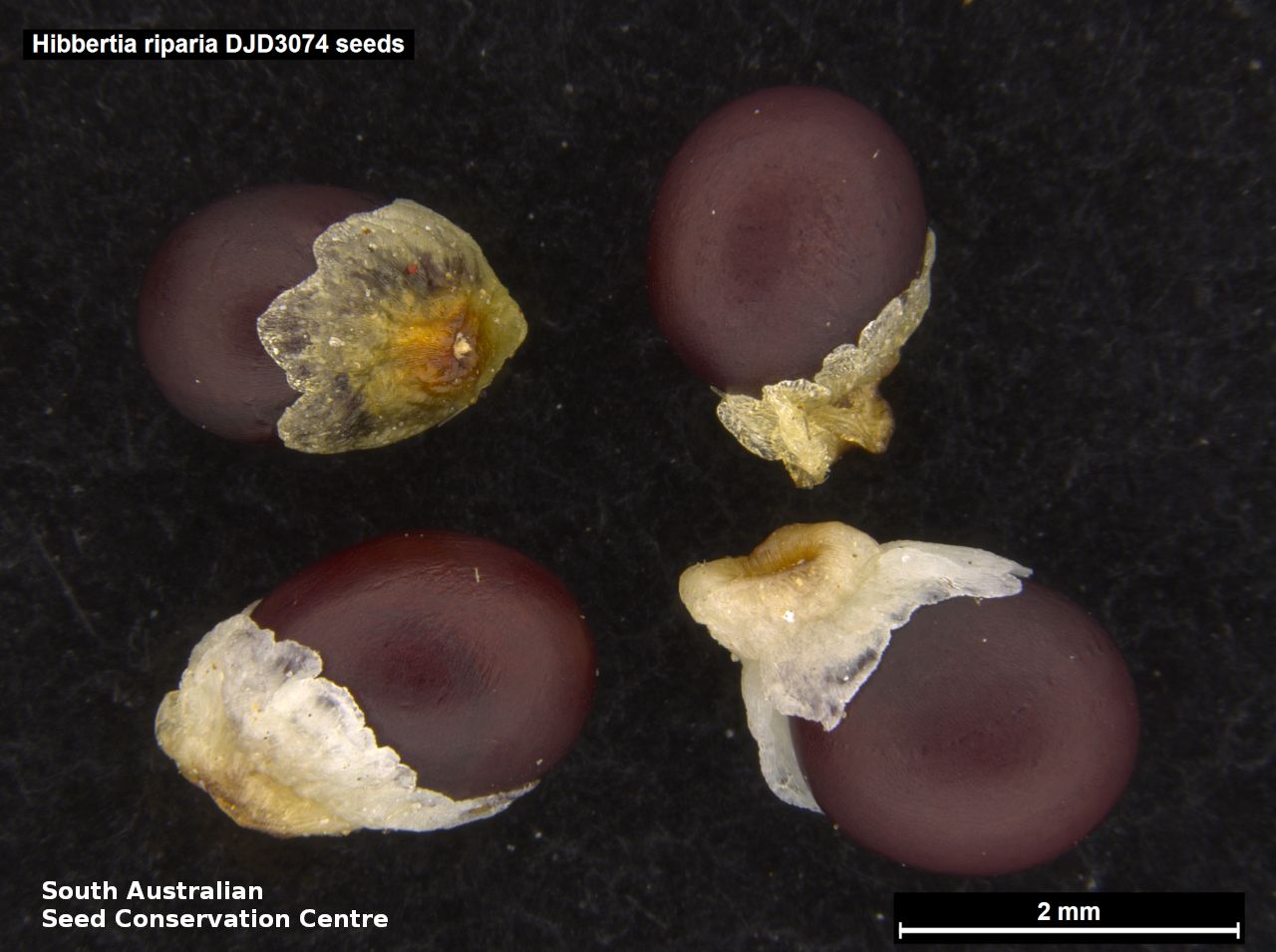

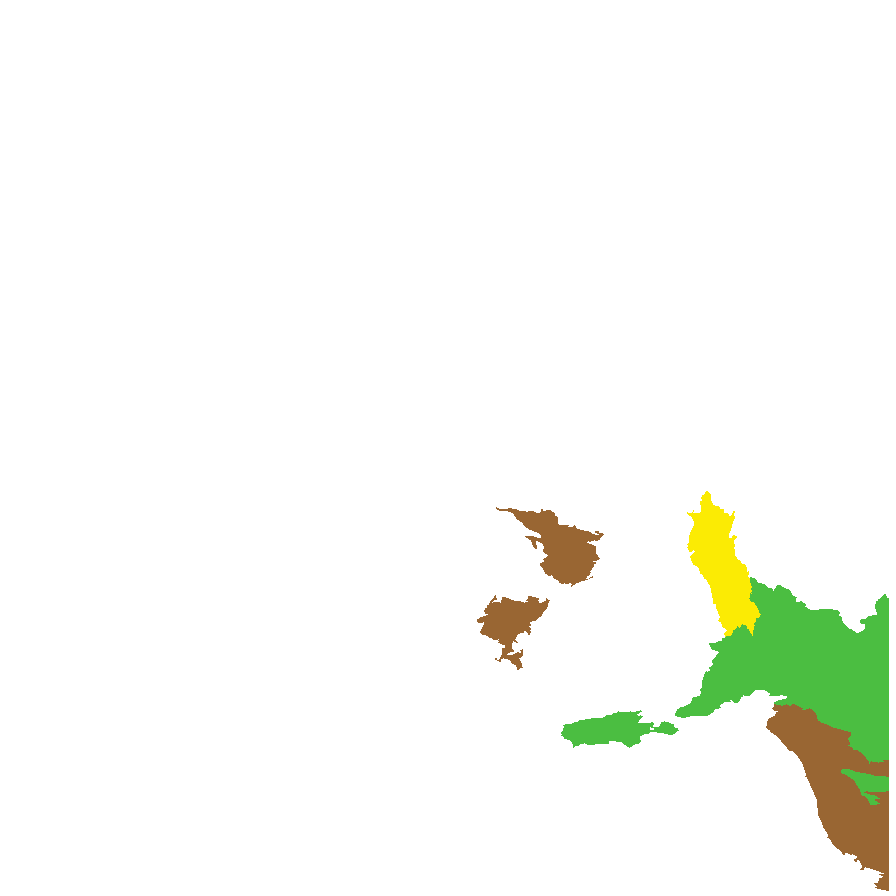
Prior names
Pleurandra riparia
Hibbertia stricta, partly
Common names
Erect Guinea-flower
Bristly Guinea-flower
Etymology
Hibbertia, named after George Hibbert (1757-1837), a London merchant who maintained a private botanic garden at Chelsea. Riparia, from the Latin 'riparius' meaning of a river bank, possible alluding to the habitat where the type specimen was collected.
Distribution and status
Found in the southern part of South Australia, growing in a diverse range of habitats. Also found in Queensland, New South Wales, Victoria and Tasmania. Native. Common in South Australia. Common in the other States.
Herbarium regions: Southern Lofty, Kangaroo Island, South Eastern, Green Adelaide
AVH map: SA distribution map (external link)
Plant description
Low usually erect shrub or with the longer branches drooping; to 50 cm high; branchlets closely stellate-pubescent to almost glabrous with scattered minute hairs. Leaves linear, often narrowly so, obtuse or sub-obtuse, to 20 mm long and 2 mm wide; scabrous above and below with simple or stellate hairs or almost glabrous or softly stellate-pubescent; the margins revolute to the broad prominent midrib. Flowers yellow, to 2 cm across; sessile or occasionally on peduncles up to 20 mm long; bracts at the base of the calyx usually 0, sometimes a few and usually 1 on the peduncle where this is produced. Flowering between July and November. Fruits are brown capsule with 2 carpels with 3-6 ovules in each, pubescent. Seeds are brown, globular seed to 2.1 mm diameter.
Seed collection and propagation
Collect seeds between September and January. Collect mature capsules, those that are turning a pale straw-colour and contain brown seeds. Place the capsules in a tray and leave to dry for one to two weeks. Then rub the capsules gently by hand to dislodge the seeds. Use a sieve to separate the unwanted material. Store the seeds with a desiccant such as dried silica beads or dry rice, in an air tight container in a cool and dry place. This genus tend to have low seed viability. From one collection, the seed viability was average, at 62%. This species has morpho-physiological dormancy and can be difficult to germinate.